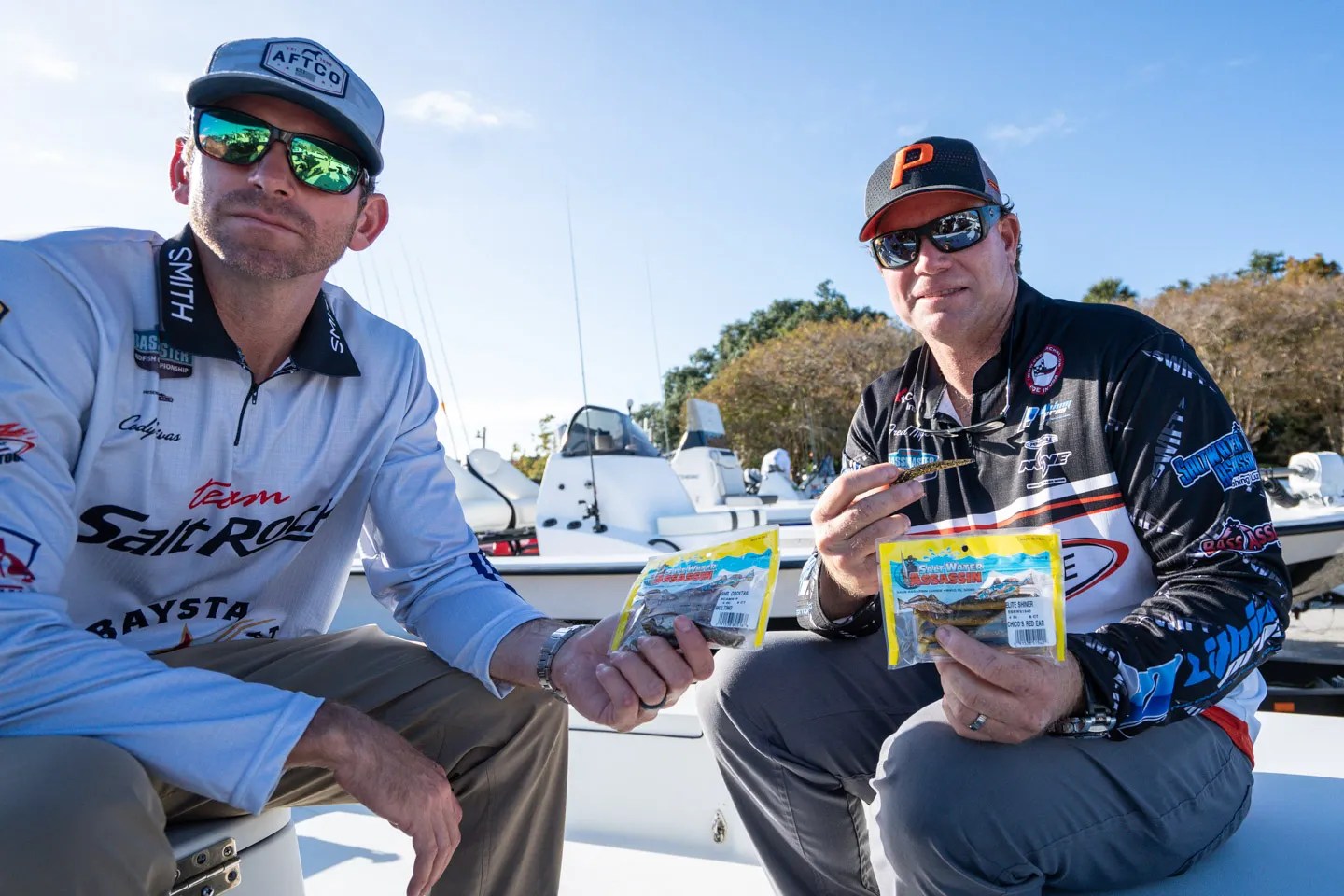
Redfish are not complicated. See food, eat food. However, they definitely have their preferences and it’s usually based on seasonal availabilities.
Case in point: Apalachicola Bay’s white shrimp migration.
Early summer finds adult shrimp moving close to St. George Island to spawn. Incoming tides carry the larvae through the bay and into the dense marsh north of the U.S. Highway 98 Bridge.
After maturing in a relatively safe environment, the shrimp typically exit the marsh in late October and head to the Gulf to continue the life cycle. This crustacean convoy does not go unnoticed by birds and fish, with reds doing their best to pack their bellies.
Fred Myers III, who along with Cody Chivas, won the 2023 Yamaha Bassmaster Redfish Cup Championship presented by Skeeter Boats at Winyah Bay, suspects this year may be different.
“There’s a few shrimp around, but I think those recent storms messed up that hatch and there are not as many shrimp as I’ve seen this time of year in the past,” Myers said. “I think the influx of water delayed it a little. The shrimp relate to salinity levels and once the (shrimp migration) kicks off, the fish just follow the shrimp.”
Tropical Disruption
Myers lives in Panama City, Fla., and has fished Apalachicola Bay for most of his life. In his estimation, the massive water influx from Hurricane Helene likely disrupted the shrimp’s schedule.
Making landfall just east of Apalachicola on Sept. 26, the Category 4 storm pushed a significant surge into the bay, while voluminous upstream rainfall swelled the Apalachicola River, which enters mid-bay.
“Just before the off-limits period, the river went up to 20 feet and that’s flood stage,” Myers said. “On the other end, they had about an 8-foot storm surge (during Helene), so you had a bunch of silty water out there.
“It’s cleared up really fast because the river has dropped down to (4 1/4 feet, as of Oct. 25) and that’s when the whole bay gets good.”
As Myers explained the moderate mixing of fresh river water with the bay’s salinity creates productive redfishing, as the outflow brings a dependable food supply.
The Reset
In this post-storm period, Myers said Apalachicola Bay is definitely adjusting. He’s unsure of the shrimp migration schedule, but he’s seen promising water quality developments.
“We saw some decent water — I wasn’t disappointed with it, but it’s not as clear as it usually is,” Myers said. “Some of the freshwater grass has died, but the saltwater grass looks good. I think the fish are just moving in on those areas.
“I’ve fished this place in the past when there’s not many fish and then overnight you have schools of 100 fish. It’s a barrier island system, so they just come in and it can happen in a matter of a day. In the last couple days of (practice), we saw more and more fish each day.”
Chivas agrees and adds this: “We just had two hurricanes in the Gulf (also Milton, which made landfall Oct. 9 in Sarasota), so we didn’t know what to expect. The first couple days of practice, we found out that the storm might have affected the area a little more than we were hoping.
“There’s some really dirty water in some areas where we were looking and then we found some clean water with no fish. The water clarity is definitely going to be a concern for us, but I think it’s definitely going to clean up as we’re getting away from (last week’s) full moon.”
Strategy Points
Chivas said he’ll put the Berkley Gulp Shrimp to work, both as a cast-and-retrieve bait and under a popping cork. Myers will balance that crustacean look with his Bass Assassin Lit’L Boss paddle tails to mimic the various finfish forage that reds also chase.
“As far as the salinity (near the marsh) not being quite right, we did see some birds out in the middle of the bay and, usually they’re on shrimp,” Chivas said. “So, the storm impacts might have relocated the shrimp from where the redfish are usually foraging on them.
“The first day of practice, we had fish trying to eat some shrimp that were tiny. If we get into a situation where we think they’re eating shrimp I think we’ll downsize our baits to match that.”
As far as locations, Myers said he believes in the wisdom of sticking with proven seasonal patterns.
“I’ve fished down here a bunch and I know where these fish live and if they’re there, hopefully, we can catch them,” Myers said. “We will probably stay in a particular area as long as it will allow us to stay.”





